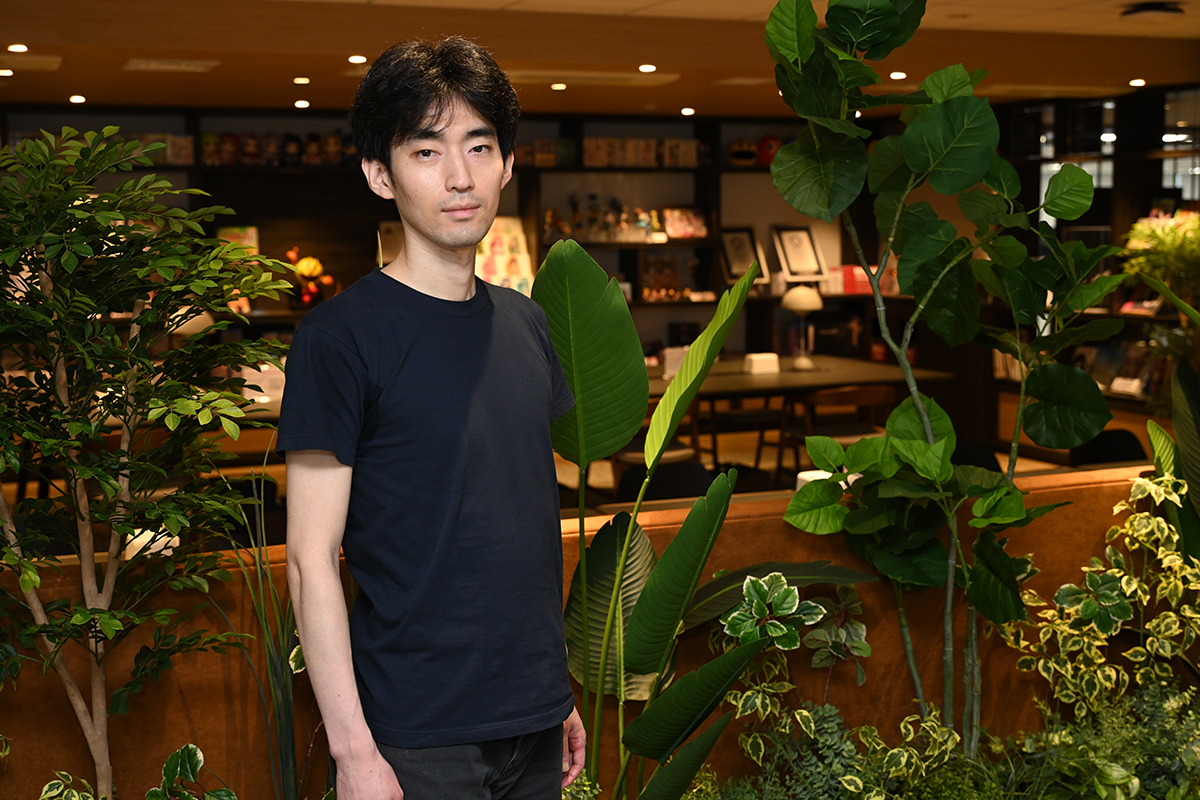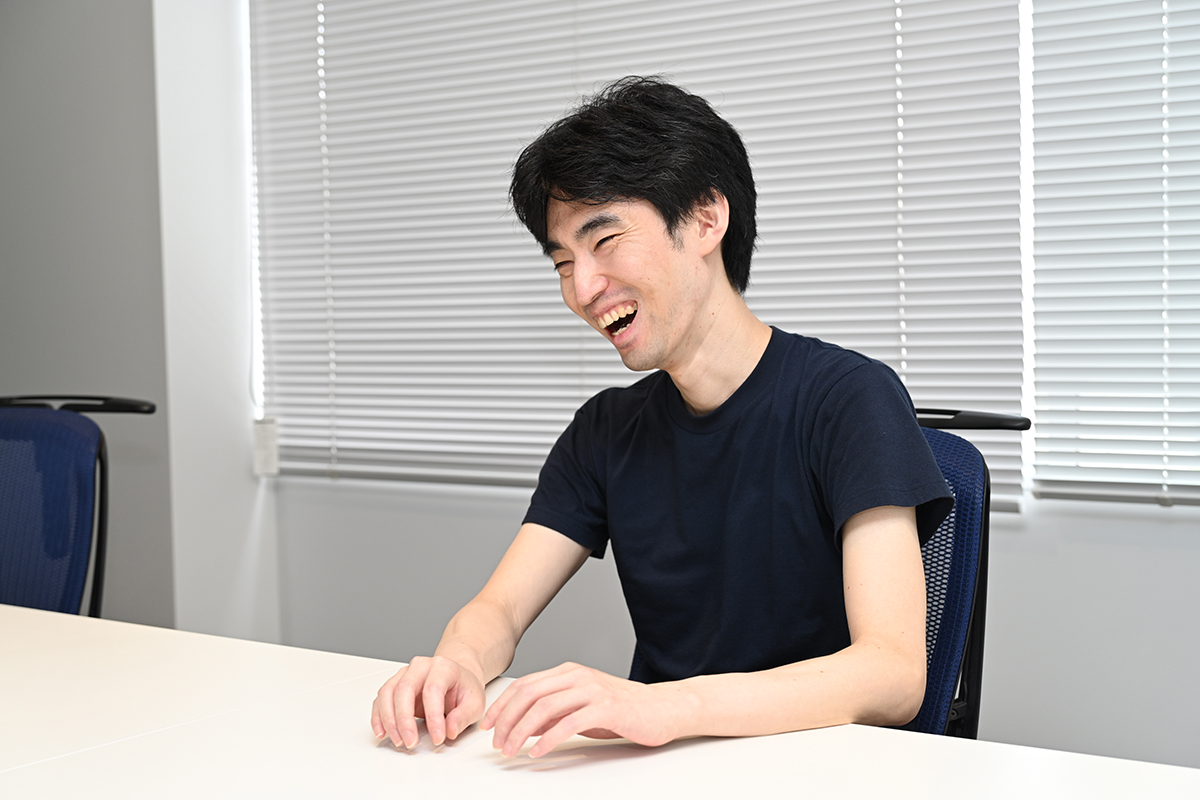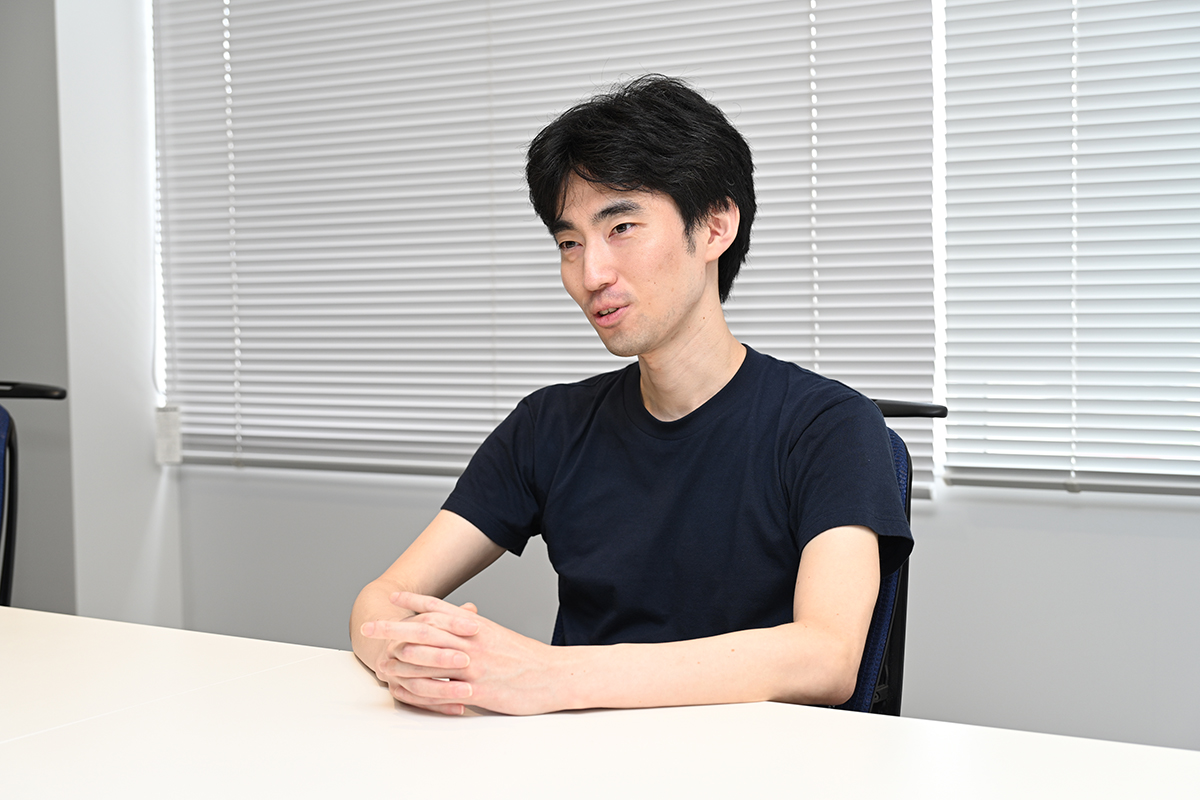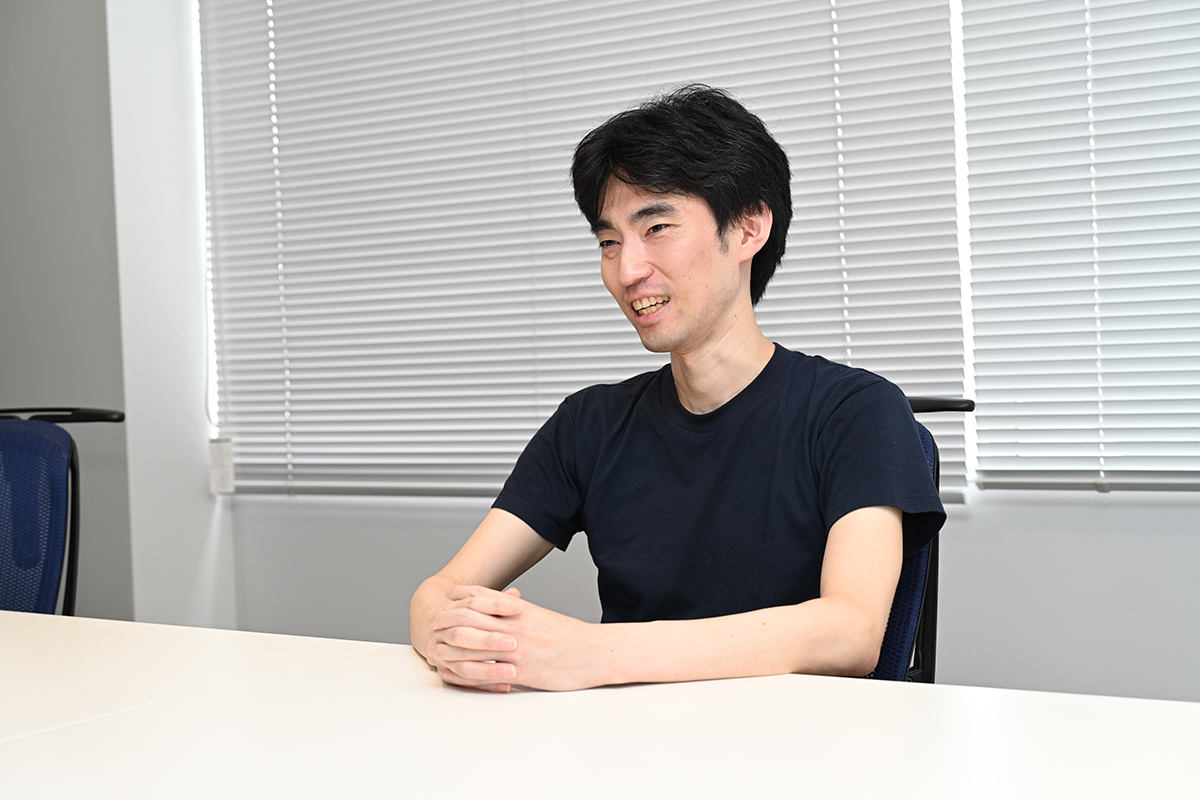*BNS will be used in place of Bandai Namco Studios for the rest of the article for brevity.

Animation Engineer Masanori Shinkawa
Continued Curiosity for Physics-Based Simulation
―Can you tell us your current affiliation and what you’re working on now?
I’m currently assigned to the in-house game engine development team, working mostly on features related to animation and providing support for game projects that use our in-house game engine.
I also developed the proprietary cloth simulation solution used in Tekken 8.
You can learn more about it from our presentations last year at CEDEC2024 and SIGGRAPH Asia 2024, but cloth simulation is when you calculate the dynamics of something like the clothing a character is wearing.
▶CEDEC2024: The In-House Cloth Simulation System Powering the Swaying Objects in Tekken 8 (Japanese)
―Were you involved in physics and mathematics research in school?
Yes. I conducted research on things like physics simulations in my specialized high school, university, and post-graduate studies.
I started learning physics when I started going to the specialized high school. I always liked computers, so when I was looking at what high school I wanted to go to after middle school, I learned about specialized high schools. When I started applying to them, it broadened my perspective as to what was available and I realized that I was interested in the sciences, so I chose a high school that specialized in that.
I went to schools for my secondary and post-secondary education where I could mostly do whatever I wanted.
At the specialized high school, I researched GPU-based physical simulation of fluids like water and air. GPU-based physics simulation has become the norm now, but it was still cutting-edge technology when I was in school.
This would lead to me doing something fairly strange in university… (laughs)
I used physics simulations to recreate how snails and slugs use their muscles and slime to climb walls and move around. I didn’t like snails and slugs… but maybe that’s why I was interested in them. It seemed like an interesting research topic and that’s why I chose to do it.
I transitioned to a new research topic in graduate school, and this time it was about fluids with changing volume.
An example of this would be like when you shake a bottle of soda and it starts foaming. That’s the kind of phenomenon I was researching with physics simulations.
―I see a lot of your research is about getting to the bottom of things you find interesting.
Yes, but since it’s academic research, it needed to be a novel topic that nobody had worked on before. I ended up choosing this topic by looking up a list of things that piqued my interest but haven’t been researched before.

Gaining Experience through Product Development and Building Expert Knowledge
―Did you choose to join Bandai Namco Studios because something interested you there?
When I was still a student researching physical simulation, I wanted to work at a job where I could use the technology I was researching in ways to make people happy, through games or cinematics.
I chose Bandai Namco Studios because they developed games in all kinds of styles and genres, so I was interested because I thought I could experience all kinds of things there.
―How did you end up on the in-house engine team?
I finished my new hire orientation and was placed into a department that made animation technologies.
I talked with my manager about how I wanted to make use of my research in the sciences, which led me to help develop the in-house cloth simulation system.
The animation technology R&D team then merged with the in-house game engine development team, so that’s how I ended up on the engine team.
Working on the engine team, I started to feel a need to learn how people made games and that it wasn’t all about research. That’s why I asked to work on a game development project. The project has since reached one of their milestones, so now I’m back on engine development.
―Did your experience on the game development project prove useful?
Yes, one of the benefits was that I got to directly communicate and connect with all kinds of creators at the company.
In game development, there are game design documents and you have to make the game around them, so you have to communicate with the people who made the documents to understand why they designed things a certain way, get feedback from the team after that part of the game is complete and make adjustments based on their feedback… This sounds obvious, but it was good for me to experience working with people in disciplines outside engineering.

The Joy of Seeing Your Technology Evolve
―Do you have any memorable stories to share since you started working at BNS?
I have a story from when I worked on the cloth simulation system.
Cloth simulation technology exists to make the clothing on a character look more realistic. But when you actually release the tool for people to use, the Visual Artists* at the company started asking if they could use it for other things that it wasn’t originally intended for.
For example, hair, accessories, things that are not clothes… Although the technology was originally meant for clothing, broadening its scope of application has allowed it to be used for various things.
What surprised me the most was it being used for skin. The system was being used to make skin wobble when the character lands from a jump or when they hit something, on characters with high body fat, or for the thighs. Even though it’s something I made, it was interesting to see it evolve in ways that I could have never imagined.
Working with people from various disciplines can lead to unexpected chemistry between developers.
* Visual Artist: A comprehensive title used for artists at Bandai Namco Studios. They include character artists, environment artists, and the like.
Engineers Need More than Just Technical Skill
―What do you pay particular attention to when working?
I usually get requests from other people due to how my team is organized. When someone asks me for something, I make sure to understand what they want to achieve and why they want to do it.
If I can understand these things, I can put myself in their shoes and become as passionate as they are about what I’ve been asked to work on. This leads to motivation and results in a better product at the end. I use it as energy to drive myself as I work.
But communication skills are needed to properly understand what the person wants and to figure out what they’re thinking.
―I guess communication skills are just as important as raw technical prowess.
I also focus on making something usable as quickly as possible.
A former manager of mine taught me that “it’s faster to show them visually. This is especially true for Visual Artists as it’s easier to get across what you mean not through text, but through something they can see”. I agree completely.
By showing them what you have, you get feedback like “change this part” or ”I actually had a different idea of what I wanted this to be”, thoughts and intentions that they would have not expressed otherwise. This type of information is important for engineers.

Rewarding Work and Future Challenges: On the Forefront of Cloth Simulation
―Were there any recent moments where the job felt rewarding?
It’s something very simple, but it feels strange yet very rewarding when something I contributed to is running in the game.
For example, I saw people comment that the clothes in Tekken 8 moved nicely, or the long hair flowed well. When I read that, I felt really happy as it was validation that my technology had contributed to increasing the quality of the game.
Obviously I wasn’t the only person who worked on it. There were also the Visual Artists who tuned the system to make the movement look nice, and the system wouldn’t have reached its current level of completion without them. That said, seeing people say good things about the technology is very motivating.
―What are your aspirations, or are there any challenges you want to take on in the future?
There are plans to incorporate the cloth simulation system we made into the in-house game engine, and it’s something I want to try trackling. If it gets used in games of various genres and visual styles developed with the engine, we can make the system even better as we change it to fit the requirements of these games.
We still have many leftover requests from our Visual Artists, and whenever I watch people play Tekken 8, I still see places where I can improve the system, so I’d like to work on these things to make something even better than before.
In the future, I would like BNS to be the company known for its cloth simulation technology.
I’ve been focusing on making other animation features recently, but I’d like to be back on the forefront of developing behavior for simulated cloth animation in the future.
―Thank you very much!
Related articles: Read these interviews if you’re interested in what our Engineers do!
・Doubt Everything! Three Important Rules of Being a Technical Artist
・Thoughts on Being a Game AI Engineer as a Second-Year New Graduate Hire
・What Made You Think to Use AI to Make Games More Fun?
・What Makes a Technical Director? The Importance of Accumulating a Broad Range of Experience
TEKKEN™8 & ©Bandai Namco Entertainment Inc.




